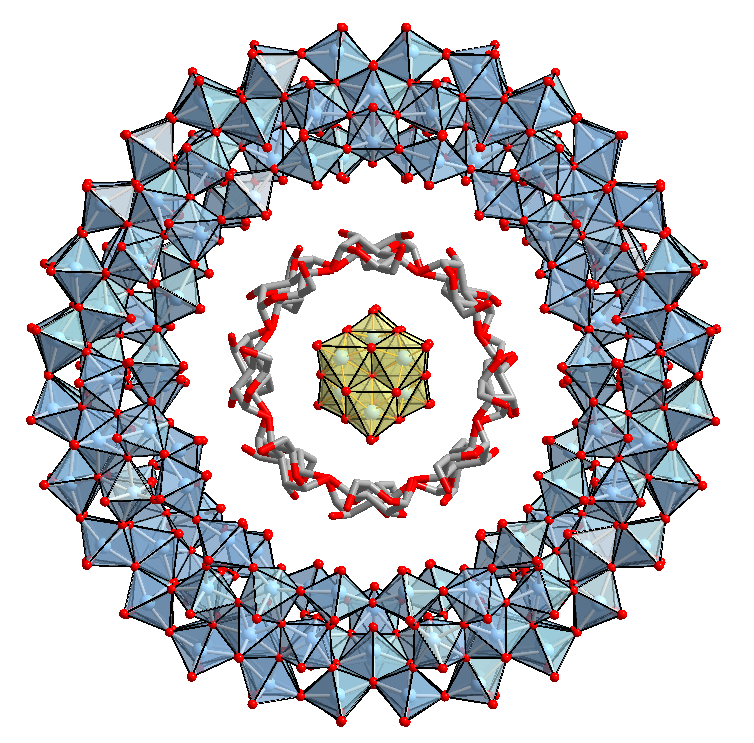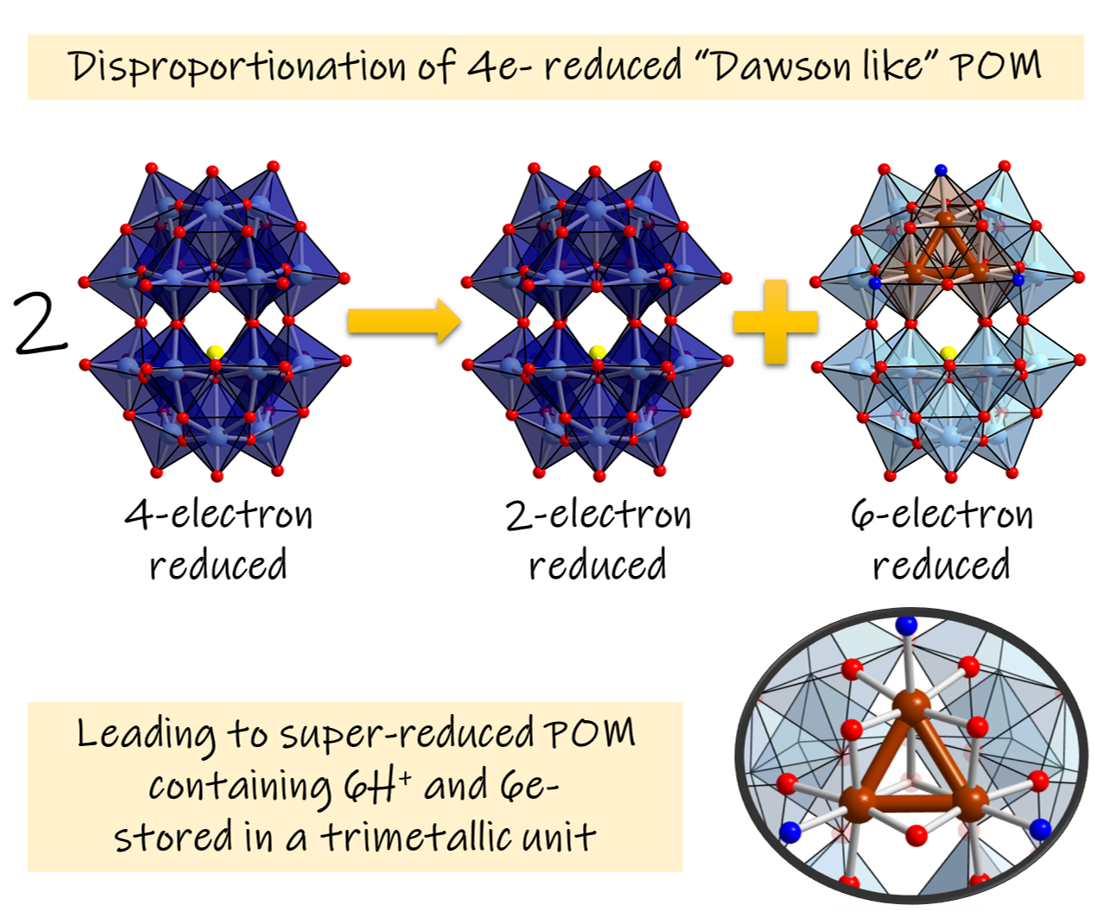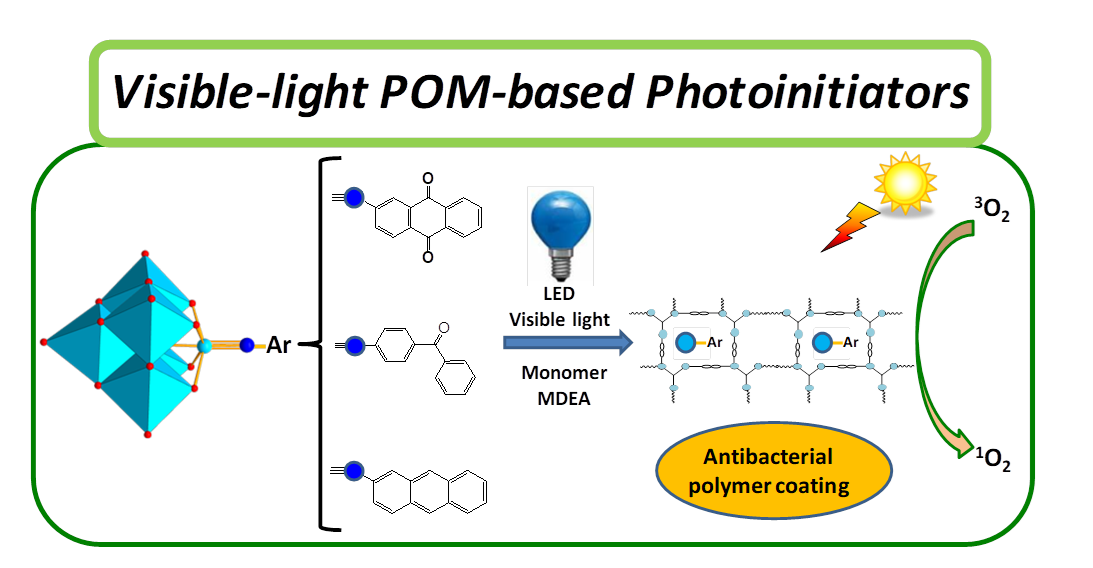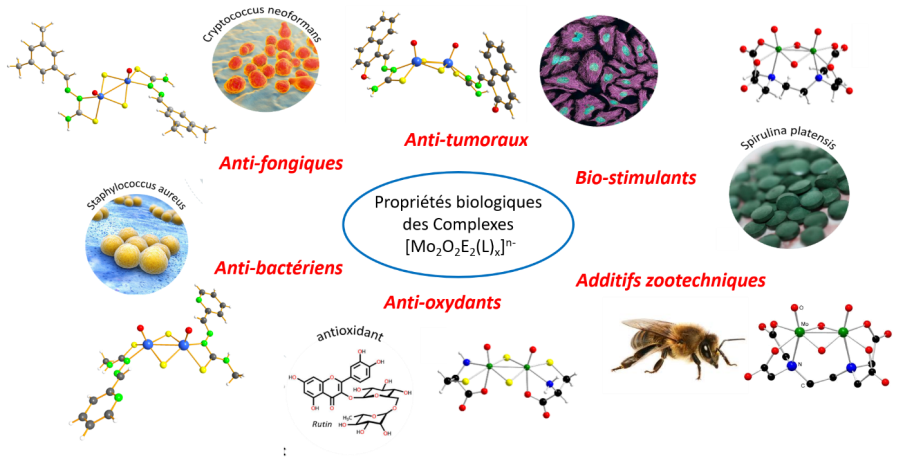You are here : ILVENResearch TeamsMIMMolecules@MIM
- Partager cette page :
- PDF version
Molecules@MIM
The activity of the " Molecules " axis is dominated by the polyoxometalates (POMs) theme. The team designs its own synthesis methodologies for the creation of innovative molecular objects. These are novel combinations based on covalent or supramolecular interactions between a POM unit and an organic fragment (hybrid systems) or an inorganic cluster (CLUSPOM system). Coupling processes involve organic synthesis, inorganic polycondensation, coordination processes or supramolecular recognition. Molecular objects are characterized by their intrinsic properties (structural, redox, optical, chemical or biological) and generally integrated or immobilized in a complex assembly (surface, composite, MOF, polymer) designed for a given functionality (electrocatalytic, photocatalytic, specific sensor, biological activity...).
Super-chaotropic POMs

Since 2017, the MIM team has highlighted a series of remarkable phenomena concerning the aggregation properties of POMs in aqueous solution. These results correspond to a generic hydration property of polyoxometalates in solution that ranks this class of molecular ions among super-chaotropic species with reference to the classification proposed by Hofmeister. Since then, these preliminary results have been widely confirmed, and we have shown how the expression of this property can be used to control aggregation processes occurring in solution.
Recent publications
Super-reduced POMs
 One of the most remarkable properties of POMs is their ability to exchange large numbers of electrons, making them ideal candidates for designing electrochemical energy storage systems. By combining electroanalytical (voltammetry, spectroelectrochemistry) and structural (XRD/multi-nuclei NMR/ EXAFS) studies, our team is committed to understanding the mechanisms of massive electron/proton storage.
One of the most remarkable properties of POMs is their ability to exchange large numbers of electrons, making them ideal candidates for designing electrochemical energy storage systems. By combining electroanalytical (voltammetry, spectroelectrochemistry) and structural (XRD/multi-nuclei NMR/ EXAFS) studies, our team is committed to understanding the mechanisms of massive electron/proton storage.
Recent publications
Hybrid POMs
 The advantage of hybrid POMs lies in their ability to combine complementary properties to create the synergies needed to target specific functionalities, such as photochromic, antibacterial, luminescent, catalytic or polymerizing functions. For example, by grafting photopolymerizing functions (benzophenone, anthraquinone or DASA) to Lindqvist- or Anderson-type POMs, it becomes possible to integrate POMs into polymer matrices in a rational way. The polymers resulting from these covalent hybrids are being studied for their anti-bacterial properties.
The advantage of hybrid POMs lies in their ability to combine complementary properties to create the synergies needed to target specific functionalities, such as photochromic, antibacterial, luminescent, catalytic or polymerizing functions. For example, by grafting photopolymerizing functions (benzophenone, anthraquinone or DASA) to Lindqvist- or Anderson-type POMs, it becomes possible to integrate POMs into polymer matrices in a rational way. The polymers resulting from these covalent hybrids are being studied for their anti-bacterial properties.
Recent publications
Metal-oxo complexes for biology: from design to zootechnical applications

Present in over 50 enzymes, molybdenum is an essential trace element in biology. For many years, the MIM team has been developing expertise in the synthesis of supramolecular systems based on [Mo2O2E2]2+ (E = O or S) clusters. We have recently demonstrated that this entity, combined with organic ligands such as poly(thiosemicarbazones) or polycarboxylates (IDA, EDTA, NTA...), leads to a wide variety of molecular complexes whose modularity varies according to ligand design, and whose antibacterial, antifungal, antitumoral or antioxidant properties rival those of reference compounds in the literature. Among these complexes, the one associating the EDTA ligand proved particularly interesting in an unexpected field: beekeeping! This project has received a great deal of financial support, which has enabled us to scale up the TRL to create a start-up company: OLIGOFEED.
Recent publications
POMs for small molecule activation
The MIM team is also developing molecular catalysts based on POMs containing molybdenum sulfide units {MoxSy} for hydrogen production. These catalytic objects can be integrated into photocatalytic devices or deposited on silicon surfaces, enabling protons to be reduced under near-thermodynamic conditions.






